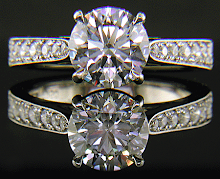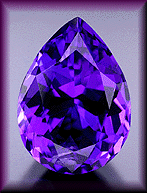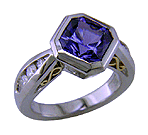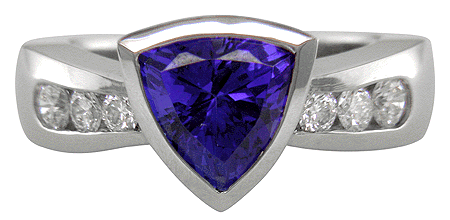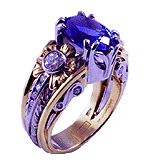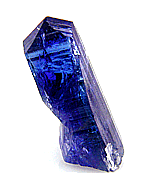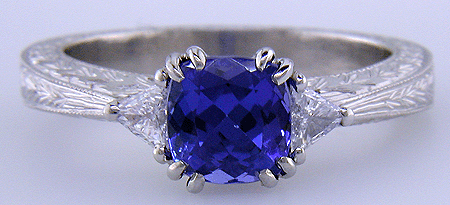I have always loved designing with Tanzanite. The gemstone's rich, velvety blue/violet color with flashes of red is reminiscent of lightning in a late evening sky.
Ever since Tanzanite was first discovered in the 1960s, this exotic gemstone has tantalized with its incredibly beautiful colors. To help you decide if Tanzanite is a good choice for your next custom jewel, I answer the following commonly asked questions about this wonderful gemstone.
Are Tanzanites a "soft" gemstone?
Although not as hard as Sapphires and Diamonds, Tanzanites are fine when properly set in jewelry. Because it is not as hard, Tanzanite is more susceptible to scratches, but common sense precautions will protect and preserve the beauty of this striking gemstone.
For example, you should not wear your Tanzanite ring while working in the garden. Of course, you should also remove your Sapphire and Diamond rings when engaged in activities that might lead to a nick or scratch. When not being worn Tanzanite and other jewelry should be stored in individual cloth pouches, so that the gemstones do not inadvertently abraded each other.
Proper jewelry design can also mitigate the risk to your Tanzanite. Tanzanite is often set in less exposed, less active, pieces of jewelry, like earrings and pendants. When setting Tanzanite in a ring it is best to choose a low setting that will help protect the gemstone while showing off its brilliant color. Bezel settings are a wonderful option for setting Tanzanites.
Are Tanzanites becoming rarer?
For all its beauty fine Tanzanite is found in only one place in the world - an inaccessible mine lying in the foothills of Mount Kilimanjaro. Over-mining, flooding and cave-ins at the mine site have limited the supply of higher quality, larger gems. As the popularity of Tanzanite has increased, the scarcity and cost of finer Tanzanites has risen. But, be aware that not all Tanzanites are equally fine or scarce.
There is an abundant supply of lower quality Tanzanites, often with pale or grayish color and small in size. Commonly offered on home shopping channels and at discount jewelers, these lesser Tanzanites lack the beauty and pizzazz of the finer stones. Be careful! I have seen lower quality Tanzanites offered at the same price as finer gemstones.
Are the striking colors of Tanzanite natural?
Tanzanite is a natural gemstone whose color is enhanced during cutting by a process called "heat treating". When found in nature, Tanzanite crystals are usually a reddish-brown color. The gemstone crystals are heated in order to bring out the rich blue, purple and violet colors we love. The color change is permanent.
A similar heat-treating process has been used for thousands of years to enhance the color of Rubies and Sapphires. If a jeweler or salesperson does not inform you about the heat treatment of Tanzanites and other gemstones, you should probably not be working with them.
There are several man-made and natural materials that simulate the appearance of Tanzanite. One, known as synthetic Fosterite, is grown in a lab and is worth significantly less than Tanzanite. Other gemstones may be treated with films or other agents in an effort approximate the beautiful color of fine Tanzanite. Because these materials may be misrepresented as Tanzanite, it is best to only work with a knowledgeable, reputable seller with a background in gemology. You may want to have your Tanzanite evaluated by a qualified independent gemologist.
Please visit our Tanzanite Ring Gallery where we feature
more of the Tanzanite jewels we have created.

